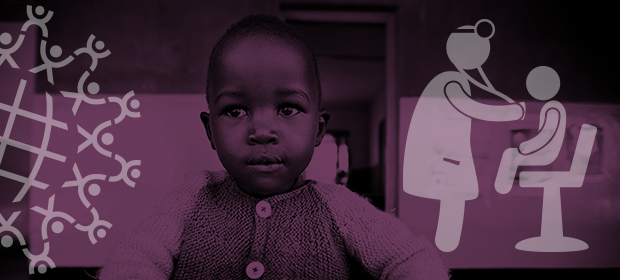Where We Work
See our interactive map


To end the country's HIV epidemic, new infections among children must be eliminated. This district is making it happen.
Children are the most vulnerable members of our society.
Be it from hunger or disease, the littlest and most innocent human beings should not suffer—because it is not their fault. It is never their fault. Their life and wellbeing depends on others.
It is our responsibility and moral duty to do everything in our power to protect them from harm.
The number of children born HIV-positive has dropped by over 90%.
HIV can pass from mother to child during pregnancy, childbirth, and breastfeeding. But when effective medication is taken, the risk of transmission is significantly reduced. Children are born and remain HIV-negative, even when an HIV-positive mother is breastfeeding her HIV-negative baby.
As a matter of fact, since the PMTCT (prevention of mother-to-child transmission) program was started, we have seen HIV transmission from mothers to their children decrease from 30% to less than 5%.
This is a huge success.
All of us here have one goal in common: we want to end the HIV epidemic. And to achieve that, new infections among children must be eliminated.
The World Health Organization promotes a comprehensive approach to preventing mother-to-child transmission of HIV. One important part of this strategy is to provide appropriate treatment, care, and support to mothers living with HIV, their children, and other family members.
Since 2004, thanks to several programs addressing mother-to-child transmission in Namibia, the number of children born HIV-positive has dropped by over 90%.
The health care workers and policy makers in the Ministry of Health and Social Services can truly be proud of this achievement.
However, there is no reason to relax our efforts or believe we have beaten the disease yet.
It is no secret that the highest risk for HIV-positive infants to die is within the first three months of their life. Therefore, every effort must be made to ensure that children of HIV-positive mothers be diagnosed quickly in order to immediately put them on treatment.
Today, 19 out of 20 HIV-exposed babies are being tested and referred to treatment and care if needed.
Right here in Nyangana, Namibia, during 2015, only every second infant exposed to HIV was tested within the first six weeks, which is the age recommended by WHO and adopted by Namibia.
And today? It fills me with pride that I can say we have reached a rate of 94.4%. In other words: Today, 19 out of 20 HIV-exposed babies are being tested and referred to treatment and care if needed.
No doubt, this is a milestone worth celebrating.
PEPFAR, through USAID, is helping to further close the gap between diagnosis and linkage to treatment through its partner IntraHealth International and the UTAP (USAID Technical Assistance Program) project. This project has intensified its efforts to make all relevant tests available where people seek care—even in remote areas—to ensure that young patients quickly get the treatment they need.
Innovative platforms such as the one designed by IntraHealth, tailored to decentralized health settings, make it easy for health workers to carry out tests and follow up on babies without requiring mothers to travel long distances to the nearest hospital. Their tracking system is a huge success, making sure mothers and their babies remain in the system. Many people have worked hard to make this program a reality.
I am delighted to see here today the latest shining example of the strong partnership between the Ministry of Health and the U.S. government. I want to express my deep appreciation to all the physicians, nurses, laboratory staff, counselors, community mobilizers, and other health workers who have done so much to bring us to this point.
This is an excerpt of Ambassador Daughton’s remarks at Nyangana Hospital on May 11, 2017, in Namibia’s Kavango Region. The United States government supports this work with funding from the U.S. President’s Emergency Plan for AIDS Relief (PEPFAR) through US Agency for International Development.
Get the latest updates from the blog and eNews




